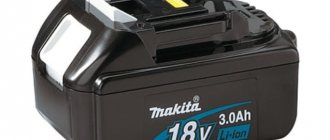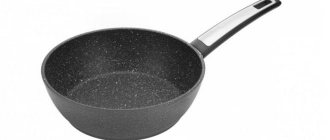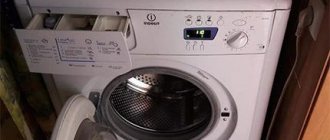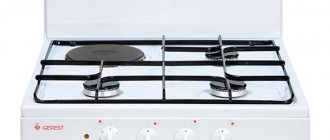No woodworking is complete without a plane. People strive to make their work easier, which is why hand tools have been replaced by electric planes. Defects and various irregularities are now no problem. The machine only needs to be given a direction, and further work will be done automatically.
Main features of the tool and its purpose
Electric planer - this tool, which appeared relatively recently, has already reliably proven itself as an indispensable tool when performing many construction and carpentry works. Its manual counterpart is deprived of the ability to perform many functions and a certain comfort during operation. The electric planer is powered by a drive, and the worker can only direct the tool in the desired direction.
A modern electric planer can process parts to size, cut quarters, adjust parts to each other, and many others. In addition to the standard tool, a large number of technological devices are produced for this tool, which can significantly expand its functionality.
How does he work
The main task of a plane is to level a roughly processed flat surface. As it is leveled, that is, after passing the plane, the flaws of the previous rough processing are removed from the surface of the workpiece and it acquires the necessary smoothness.
The surface treatment of the part is usually carried out using a grinding plane. High quality processing is ensured by knives installed in a rotating drum. High rotation speed, depth of installation of knives and smooth running of the planer ensure a clean surface.
Operating principle of an electric planer
The quality of work of this tool directly depends on the installed electric motor, which rotates the drum with knives fixed on it. It's all about the structure of the material to be processed. Wood is not uniform and to obtain a high-quality surface of the part it is necessary to ensure high speeds. Some models are equipped with power plants with a power of up to 1 kW and a speed of up to 10,000 thousand per minute.
Design Features
Motor overload protection is excluded because the electrical circuit provides for a smooth change in the drum speed.
It should be noted that to expand the capabilities of the plane, some manufacturers leave the drum open on one side. That is, the consumer has the opportunity to choose a quarter. In addition, such a detail has a positive effect on the stability of the tool as a whole, especially when machining thin edges.
Electric planer device
Most electric planers come with additional accessories. For example, limiters that allow you to form angles of 45 degrees.
Most models allow the consumer to adjust the depth of cut of the wood. That is, the soles can be adjusted independently of each other.
For this purpose, the design provides a special mechanism. On some products, the cutting depth can be adjusted to 0.1 mm.
Another useful feature of an electric tool of this class is the ability to form quarters and folds using an additional miter gauge. It limits the planing width and ensures a right angle between the plane and the edge of the workpiece. To prevent removing more than necessary layers of wood, a depth limiter is installed.
Household and professional devices
When wondering which planer is better to choose, you need to understand that a professional device is inconvenient to use at home. Having studied the technical characteristics of a household appliance, it is easier to understand how to choose a plane. The electric device should weigh between 2.5-4 kg, its motor power should be 600-1000 W.
The quality of work depends on the engine speed. Therefore, they are selected for home conditions up to 10-12 thousand rpm.
Professional units have an engine power of 1.2-1.5 kW, weight reaches 9 kg. The planing depth of the workpiece is up to 3.5 mm. Such devices include an electronic system to maintain the required speed. Thanks to this function, work is carried out in optimal mode.
Pros and cons of electric planes
Unlike a simple plane, an electric one is capable of removing up to 3 mm of wood in one pass; a tool used by professionals has this ability; a tool designed for doing housework (household work) removes up to 2 mm per pass. Of course, this indicator depends on the type of wood.
The cutting width is also incomparable with a hand plane. The minimum width that can be processed is from 60 to 312 mm. That is, in one pass, a master with an electric planer in his hands can do a much larger amount of work in the same time.
At the same time, the use of an electric planer may be limited by its continuous operation time. That is, using a household plane, which can work uninterruptedly for no more than 20 minutes per hour, cannot be used for constant work in production, for example, as the basis for a stationary machine.
Electric planers can be safely classified as a particularly dangerous tool.
It's all about having a rapidly rotating drum with knives mounted on it. And although manufacturers take measures to ensure the safety of the person working on it, it is simply necessary to follow safety regulations.
Differences between an electric planer and its manual counterpart
The basic structural elements of manual and electric planes are the same. But the electric planer has the following differences:
- a more technically complex device;
- it can only be used if there is a power source (battery or access to a 220 V network) due to the presence of an electric motor and electronics;
- when working with it, you need to exert less physical effort than when using a manual analogue;
- high productivity;
- different knife design;
Shaped knives for electric planer
- can be used as a thicknessing or jointing power tool;
- they can choose quarters;
- the final quality and accuracy of the work performed is higher;
- when working with a tool, planing occurs due to the rotation of the drum knives, and not due to the reciprocating movements of the plane;
- it cannot be used to process corners and end parts of workpieces, level, or scrape floors;
- due to the high rotation speed of the drum, the likelihood of injury when using this tool is increased;
- the chips formed during operation are removed not through the slot at the top, but through a pipe into a special bag;
- It is possible to regulate the width of the strip captured during planing (using a side stop).
It turns out that electric planes differ from manual devices not only in increased practical efficiency of work and a more complex device, but also in a number of functional capabilities and safety of use. Electric planers have high productivity when processing wooden surfaces compared to their manual counterparts, but they must be handled much more carefully . They have come into widespread use, both at the household and professional levels.
The practical use of electric planers allows you to significantly save on lumber: purchase cheaper unprocessed ones, and then plan them yourself. When purchasing these products, you should pay attention not only to their technical indicators, but also take into account the manufacturer of the product and its price. It is better to give preference to tools from well-known companies, purchasing them in specialized retail chains where you can view the certificate.
The design of an electric planer and the principle of its operation
The basis of an electric planer is a motor, which transmits the rotation of the shaft to a drum with fixed knives. There may be several knives, but, as a rule, two knives are used in a hand-held electric tool. In principle, this is the entire device of an electric planer.
The quality of the work result depends entirely on the speed at which the drum rotates. Practice shows that the optimal speed is 10,000 - 12,000 rpm. Most manufacturers produce planes with exactly this rotation speed.
The device, as well as what the tool looks like
The electric planer consists of the following main components and parts:
- The supporting body on which the main parts are assembled and secured.
- Electric motor.
- Mechanism for transmitting rotation from the motor to the shaft.
- Working shaft with planing knives.
Other necessary items: power cord, power button, electronic starters, protection devices, etc.
You can get acquainted with the internal structure of an electric planer and learn the principle of its operation by watching the video.
Controls
A handle is installed on the body, with which the master guides the tool. Using another handle, the master holds it on the surface. In addition, a power on/off button is installed on the second handle. There is a latch next to it, which, when pressed, keeps the power button turned on. On some models, the number of drum revolutions is adjusted.
Working with an electric planer
The cutting depth is adjusted using a special mechanism, which allows for wood removal accuracy of up to 0.1 mm.
Electric planer sole
The base of the electric planer is divided into two parts. One before the drum, the other after. They are both cast aluminum and machined.
Electric planer sole
The fact is that the smoother the sole, the cleaner the processed surface. The dimensions of these soles and their weight have a significant impact on the stability of the tool during operation.
Knives and knife drum
Most often, drum knives are sharpened on both sides. This allows you to turn it over when one side becomes dull and use the other. But if both sides are dull, then the knives need to be sharpened.
Some models have knives that are made of hardened steel, and the cutting edges are made in the form of tungsten carbide inserts. This is a hard alloy used for metal processing. Knives made using this technology have a much longer service life. And the surface after treatment has an almost perfect appearance.
Knives for electric planer
The drum itself is made of steel rod. It is made with great precision. Otherwise, the drum will start to beat and the instrument will fail.
Additional functions
Let’s look at the additional functions that electric planers are equipped with, and also figure out which ones are needed and what doesn’t make sense to overpay for.
Bed (stand)
If the kit includes a stand for mounting the electric planer upside down, this significantly expands the capabilities of the tool. It can be mounted on a workbench with the working platform facing up and used as a mini jointer.
Adjusting the planing depth, as well as using which part of the plane to change it
This function is solved almost identically for all models. An adjustment knob on a large thread raises and lowers the front, “entrance” part of the table relative to the knives.
It is important to have a lock - a ratchet or an additional screw that secures the adjusted position. Otherwise, during operation, the adjusting knob - screw may rotate randomly due to vibrations. And the table will lower or rise uncontrollably, unpredictably changing the depth of planing.
The presence of a groove on the sole
A triangular cutout in the middle of the adjustable table in front of the knives is made to make it possible to remove a corner chamfer from a small workpiece. For example, you can put a strip in the groove end-on and pull it through, chamfering it.
The recess sets the bevel angle and provides greater depth, since the knives protrude more into it. Sometimes a table has not one, but several grooves. It is impossible to chamfer several slats at the same time. Different grooves can come in handy when the knives opposite one of them become more dull. Then they use another groove, opposite which the knives retain their sharpness.
Sampling quarter
An ordinary electric planer in one pass makes a small depth cut equal to the maximum planing depth on a specific model - 2-3 mm. In several passes you can select a greater depth.
For this purpose, some models of electric planers provide an additional option “quarter selection”. Together with such electric planers, a limiting side stop is supplied for adjusting the cutting width and a stop – a depth limiter.
A sample with equal sides (square) is called a quarter, scalene (rectangular) is called a rebate.
In practice, sampling with an electric planer is done slowly and poorly.
- On the side of the workpiece there are torn stripes from different passes of the knives.
- When the side fence comes off the workpiece, it is difficult to hold the plane, and the cutting line often wobbles.
- Making many passes takes time and the work is unproductive.
This option may be useful for one-time low-precision samples. But if you have to constantly make high-quality samples, this option is not suitable. The option is useful, but insignificant.
To select full quarters of adjustable depth and width, there is a special power tool, similar in design to an electric planer. Out of habit, it is also called an electric planer, but they do not plan, but select grooves. It has a double-sided stop so that the tool does not wobble when sampling. Deep knives are able to select a groove (rebate, quarter) in one pass.
Chip ejection
When planing green wood, chips may become clogged in the ejection port. Therefore, it is better if the pipe is large and does not have complex turns.
There are models in which chip ejection is possible on either of two sides. For this purpose, two pipes with a sleeve inside are provided, by rearranging which the ejection side is selected.
Technical specifications: how to choose the right electric planer
Electric planers, like all other tools of this type, are divided into manual and professional. The latter include manual and stationary installations; in addition, they are distinguished by improved parameters, high operating efficiency and reliability. These are their mandatory qualities, since a professional and stationary tool must work for at least several hours in a row.
In the electric tool market, the consumer is faced with a huge selection of planes with different capabilities and, accordingly, prices.
What criteria makes sense to be guided by the following criteria.
- Power of the power plant. Wood differs from each other in many parameters, including density, hardness, etc. It may well be that on a beam made from the same tree, the density may differ between different sections. As a rule, for domestic needs, the engine power is in the range of 600 - 900 W. If an engine with smaller parameters is installed, this will significantly reduce its capabilities.
- Number of revolutions of the drum with knives. The quality of the processed surface directly depends on this parameter. Typically, the rotation speed is several thousand revolutions per minute.
- Drum rotation speed adjustment system. This circuit not only maintains a stable rotation speed, but is also able to ensure smooth engine starting when the plane is turned on. Thus, the electric motor is protected from overloads.
- Support sole dimensions. They affect the stability of the plane during operation.
- The body of the electric planer can have two or one handle. We can immediately say that two handles provide better control of the tool.
- Possibility to adjust the grip depth. As a rule, this tincture is performed using the second handle. As some experts recommend, the optimal purchase can be considered the possibility of tincture in both directions, plus and minus.
- Knives mounted on an electric planer can be made of tool steel or carbide. But steel ones require more frequent sharpening and adjustment, and this requires more time and certain skills.
In addition, you need to pay attention to the availability of additional equipment and, of course, the cost.
Appearance is not the main selection parameter
Many consumers make the mistake of choosing an electric planer based on external features. Yes, there are a large number of tools on store shelves, of very different appearance - bright colors, fancy shapes, etc. But, just look at the models presented by the favorites of the tool market - Bocsh, Makita and others. They are distinguished by a strict design, the housings are made in accordance with ergonomic requirements.
Electric planer Makita
When choosing a tool, you must first of all be guided by the technical characteristics and, of course, the reviews of those who have used this or that brand in their work.
Motor power
Planers that are offered on the market have different powers, from 0.5 to 2.5 kW.
Knife shaft rotation speed
The cutting drum rotation speed is in the range of 10,000 – 15,000 rpm.
Planing depth
This characteristic differs between household and professional tools. For example, household devices are able to select a layer of wood up to 2-3 mm. Professional tools are able to select wood to a depth of 2 – 4 mm. Of course, everything depends on the type of wood and the power parameters of the electric motor installed on the electric planer.
Planing width
Historically, it has turned out that the minimum width that an electric tool can process is close to the parameter shown by a hand tool - 60 mm.
Planer with planing width 180 mm
The width of the planing strip that an electrically driven planer can process lies in the range from 60 to 300 mm.
Tool weight
The weight of a plane can range from several hundred grams to several kilograms. For example, the HAMMER RNK710C PREMIUM plane weighs 4 kg when loaded, and the BOSCH PHO 1500 plane
Other selection options
When choosing an electric planer, try to find out about the frequency of replacing blades and drive belts.
Typically, replacement should be done every two to three years, but some models require more frequent maintenance. The replacement itself is not difficult - the belt is located under a removable cover (in the photographs it is a black plastic panel). But the cost of the belt is about a tenth of an inexpensive electric planer. Some knives may become dull faster, but they are double-sided and therefore have a longer service life. Manufacturers do not provide official information about the rate of abrasion, so perhaps tool owners will share this information with you. However, if you do not plan to use the tool too often, then you can safely turn a blind eye to this factor.
But don’t forget that the more popular the model, the easier it is to find components for it. The leading brands of planes are Bosch, Einhell, WATT, Huyndai, Makita, Hitachi and DWT. Brands with “native” names – Soyuz, Stavr, Energomash and Fiolent – have gained some popularity. Thus, among inexpensive options, DWT HB 03-82 and Bosch PHO 20-82 have proven themselves well, among more “serious” tools are Bosch GHO 40-82 C Professional and Makita 1806 B.
The main advantage of buying an electric planer is the ease of operation. But if you choose a model that is too heavy, this advantage may not be so noticeable. The optimal weight of the tool for non-professional use is 3-4 kilograms.
The shape of the handle also affects the ease of use. Try holding the plane by both handles, make several test movements simulating work. It will be better if the handles are rubberized - then my hands won’t slip.
The length of the cord for electric planers can range from 1.5 to 10 meters. On the one hand, a long cord never hurts, but quite often you can hear stories about how this very cord was cut during work.
Some models of electric planers continue to plan even when the depth is set to zero. Therefore, when choosing between two similar models, it is better to give preference to the one whose planing depth notch has negative values.
If you plan to work in a workshop or outdoors, then the question of where to put the shavings is not so pressing. If cleanliness is required, then it is better to buy an electric planer with the ability to connect a vacuum cleaner (for example, Makita 1911 B or DWT HB 03-82). For some models, you can even select the chip ejection side (for example, Bosch GHO 26-82 Professional).
For long-term work, you should pay attention to the heating of the tool. Inexpensive electric planers require a break approximately every half hour. If this rule is not followed, there is a risk of damage to the instrument.
The sole of the electric planers is smooth, but you can feel small grooves by touch. The grooves are necessary to prevent the formation of an air cushion - this is the only way to achieve a cut with the same thickness of material removal. In addition, V-shaped grooves are specially created on the sole for chamfering.
The scope of delivery directly depends on the cost of the plane and its brand. Often the kit includes an additional set of knives, guides for parallels and for cutting fours, a side stop, an adapter for a vacuum cleaner and a case.
Professional electric planers
Those planes that can work without any major breaks throughout the entire working day are called professional.
Professional electric plane
They differ from household planes in increased drive power, width and depth of cut. In addition, high-quality materials are used for their manufacture: ABS plastic, alloy steel, etc. In addition, professional tools are made taking into account electrical safety requirements. All parts are designed taking into account ergonomic requirements.







